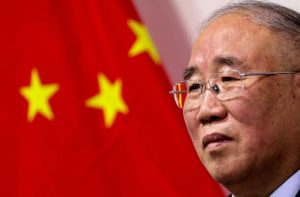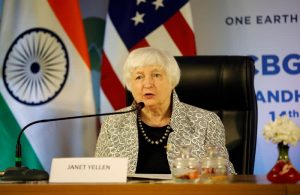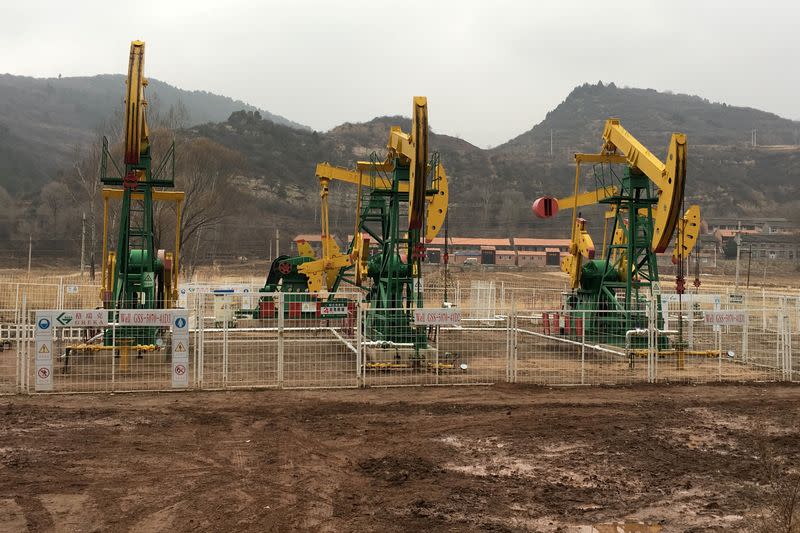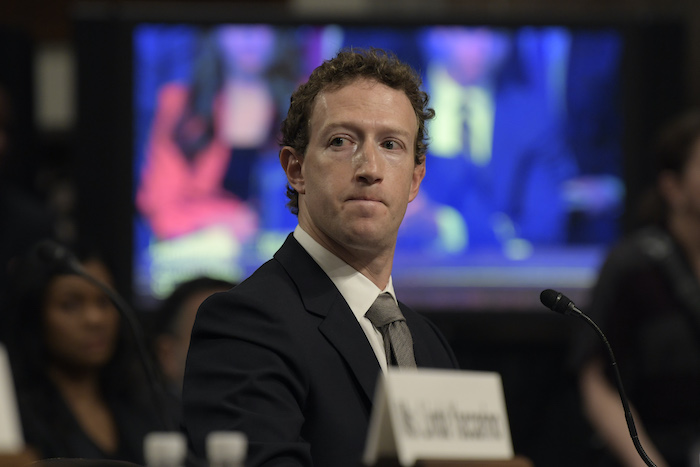A key goal of this week’s talks between US climate envoy John Kerry and his Chinese counterpart Xis Zhenhua is to get an agreement on methane emissions.
Kerry arrived in Beijing on Sunday after months of diplomatic disruptions to try to boost cooperation between the world’s two biggest carbon polluters.
Experts have said any move to cooperate on methane – a greenhouse gas responsible for roughly 30% of global warming – could provide a way forward.
“Methane is particularly important for our cooperation,” Kerry told a congressional hearing on Thursday in Washington. “China agreed to have a methane action plan out of our prior talks in Glasgow (in 2021), and again in Sharm el-Sheikh” last November.
ALSO SEE: Kerry Flies to China Seeking to Revive Climate Cooperation
China still working on how to measure methane emissions
During the COP27 climate talks last year in Egypt, China’s top climate envoy, Xie Zhenhua, made an unexpected appearance at a meeting of the Global Methane Partnership, a US-EU led initiative aimed at slashing 2020-level methane emissions by 30% by the end of this decade.
Xie said China had drafted a plan with concrete measures to curb methane emissions from energy, agriculture and waste. China has yet to make the plan public.
Sources in contact with Kerry’s team said the United States hopes China will unveil the plan before the next UN climate conference, COP28, being held in December in Dubai.
“It’s the opening salvo to be able to sit down and have some more serious discussions about methane in China,” Jonathan Banks, global director for methane prevention at the global research and advocacy nonprofit Clean Air Task Force (CATF), said.
China is aiming to bring carbon dioxide emissions to a peak by 2030 and achieve net-zero CO2 emissions by 2060. But it has yet to set targets for methane and other non-CO2 greenhouse gases, and is still working out how to measure them accurately.
The administration of President Joe Biden aims to decarbonize the US economy by 2050. The 2022 Inflation Reduction Act imposes fees on methane emissions from the oil and gas industry starting in 2024, and the Biden administration has proposed a rule to crack down on the pollution, including a “super emitter” programme requiring operators to respond to reports from environmentalists and others of large methane leaks.
Xie admitted methane controls were ‘weak’

Xie acknowledged last year that China’s ability to control methane remains “weak”, as the country was first focusing on its monitoring efforts.
A report in April from the Beijing-based Innovative Green Development Program think tank suggested that China’s rising methane levels were putting its non-CO2 climate emissions on track to increase 50% from 2015 levels by mid-century.
This would make carbon neutrality impossible, as methane is a carbon-based gas, according to the report.
Reforms to China’s industrial and agriculture sectors, however, could lead to 30-40% in methane reductions from 2015 levels by the end of the decade, a study published in August by scientists at California’s Lawrence Berkeley National Laboratory suggested.
“There may be a bit of reluctance to commit to anything without a better sense of what they’re emitting,” Banks said. “But that in and of itself could be a commitment that they can make to improve the quality of data from the sector.”
Coal mines are biggest source
Two big sources of methane emissions growth in China are livestock and rice production, neither of which are included in the country’s climate plans. The agriculture ministry last year recommended new farming practices, such as paddy irrigation management and low-protein diets for livestock, as ways to bring down methane.
Landfills are also a rising concern. But China’s massive coal sector could prove the biggest challenge.
China is the world’s largest source of methane from coal mines, with 28% of the world’s biggest methane emissions points, according to Antoine Halff, co-founder of the environmental research group Karryos.
While China has been capturing some of that gas for use in its energy sector for more than a decade, it would need to do more to have an impact on global emissions, Halff said.
The coal-producing province of Shanxi – the only region to have developed a coalbed methane industry – said last week it would raise coalbed methane use rates to 50% by 2025. However, many Chinese mines are in remote locations with no infrastructure to collect methane.
Experts hoped to see China address coal-mine emissions in its methane action plan.
“When you look around at the sources of coal mine methane worldwide, China is three or four times bigger than the next country’s coal-mine methane emissions,” Banks said.
One area with immediate potential for China-US cooperation could be in measuring methane, and Chinese firms are already working with the Boston-based Clean Air Task Force on accounting for the emissions.
“It’s a great opening for the United States to work with China,” Banks said.
US move to boost investment in India’s energy transition

In related news, the US is also working with India to develop ways to lower the cost of capital and increase private investment to fast-track India’s energy transition, Treasury Secretary Janet Yellen said on Monday.
After a bilateral meeting with India’s finance minister Nirmala Sitharaman on the sidelines of a G20 meeting, Yellen said the two nations have been collaborating across a range of economic issues, including commercial and technological collaboration and strengthening supply chains.
“In particular, we look forward to working with India on an investment platform to deliver a lower cost of capital and increased private investment to speed India’s energy transition,” she said in a statement while attending the G20 in Gandhinagar, the capital of Gujarat, one of India’s most industrialised states.
Yellen did not refer to this platform as a ‘Just Energy Transition Partnership’ (JET-P), though other countries including South Africa, Indonesia and Vietnam have already agreed with public and private sector lenders to help accelerate their shift away from fossil fuels via JET-Ps established with wealthier nations.
Energy analysts say India – a major emitter in absolute terms but relatively lower on a per-capita basis – wants a JET-P on its own terms: No phase out of coal and funds for clean energy expansion in the form of grants, not loans.
Richer, heavy-emitting nations are under pressure to help poorer countries speed up their transition to cleaner energy ahead of the COP28 climate talks in Dubai in November/December, with the world currently not on course to meet its climate goals.
- Reuters with additional editing by Jim Pollard
ALSO SEE:
China Set to Install 100 GW of Solar Power This Year – PV Mag
Global Warming Set to Break 1.5C Tipping Point by 2027
India’s Power Play to Become a Global Solar Force – Hindu
























